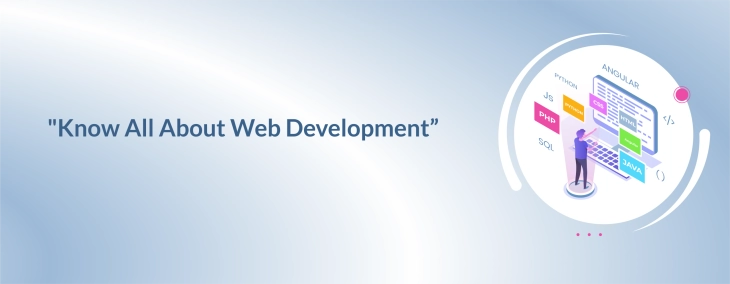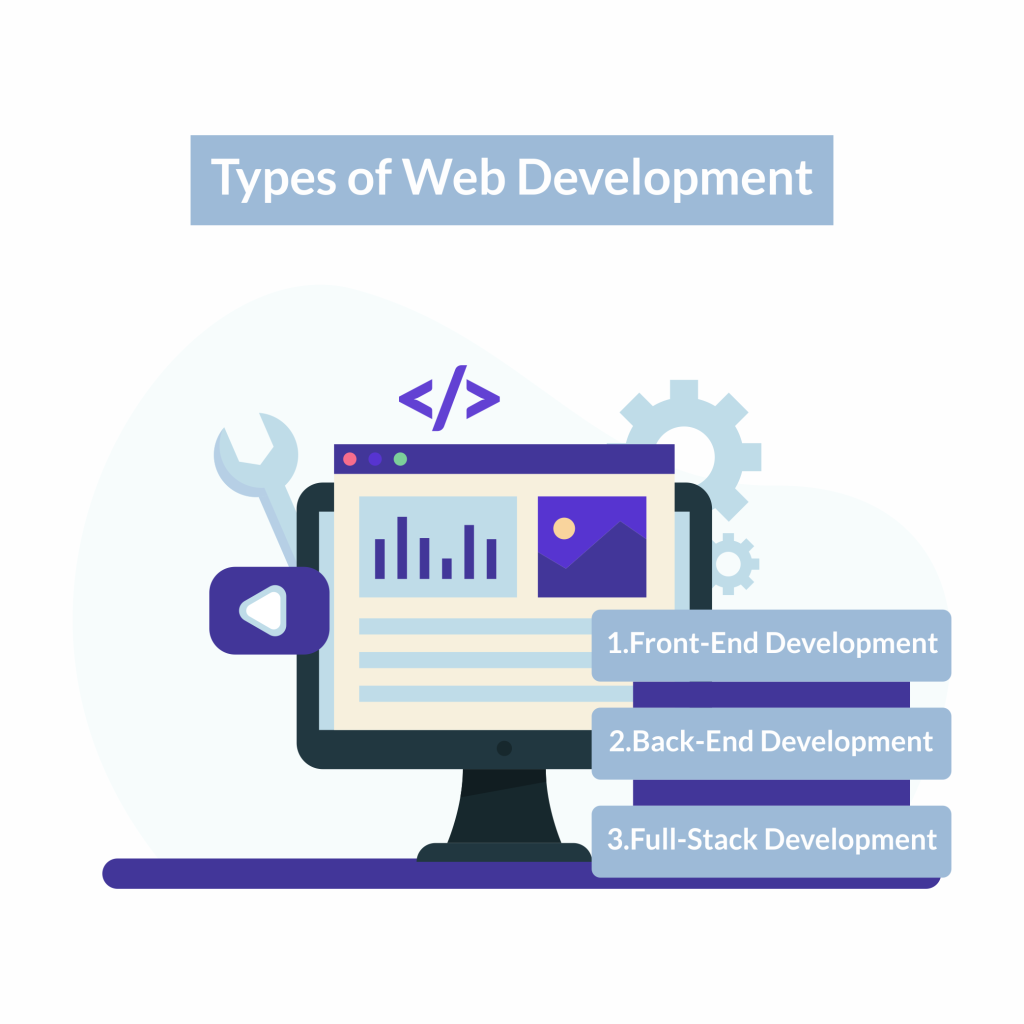
Website development is a major part of most developer’s life.
Technology plays a major part in our day-to-day lives. There are easy applications as well as there are many revolutionary applications that have made an impact in the world.
Have you ever thought about what is website development all about?
For beginners, website development looks like a complex and tough field. Therefore, in this article, we will reveal the complete information about website development.
Who is a web developer? What are the types of web development?
All this information we are covering in this article.
It will also help you in understand the skills that are in requirement to become a full-fledged web developer.
1. What is a Website Development?
Web development is the process of the creation of websites and applications. It is built for the web or a private network.
Web development focuses on the codes that help in controlling the functionality of a website.
Every tool that we come across on the internet is developed by web developers.
Examples included are the most basic sites, social media platforms, static site pages, e-commerce websites, and content management systems (CMS).
This work requires a web developer.
2. Types of Website Development
Now, have you ever considered what are the types of web development?
If you are curious to start your career in web development, then you should know about the types of web development.

Web development is divided into three parts – (1) Front-End Development (2) Back-End Development (3) Full-Stack Development.
You should have a basic understanding of these terms’ meanings and their uses of them in website development. So, that your career takes place in the right direction.
3. Front-End Development
Front-end development is basically what you see first in the browser. It consists of the feel and looks of any website.
Front-end development directs to the client-side development.
What the users see or are visible to the users when they open the browser or application consists of the front-end development.
Front-end development focus remains on the development on the client-side.
Front-end developers get engaged in understanding the code, layout, and design applications. They also ensure a seamless user experience. Front-end developers are responsible for making the ultimate look and feel of a website.
They keep the management of what users come across in the first see in the browser or application.
3.1 Front-End Programming Languages
Many programming languages fall under front-end development.
HTML, CSS, Javascript, etc. fall in the category of web front-end programming languages.
Modern browsers now can do the same work that was done by the jQuery. Therefore, jQuery is now out of trend or style.
As a front-end developer, when you work on numerous projects, the thinking needs to be creative for the creation of websites and redesigning them.
Along with layouts, color theory, and typography, the front-end developer also needs to focus on the responsive design of the website.
You do not need to learn back-end programming languages to become a front-end developer.
The websites that are built by front-end developers don’t interact with the information in database storage to make it more functional. The large sets of new data aren’t uploaded constantly.
Some examples of static sites include people like small business owners and restaurant chains.
For front-end developers, there are numerous jobs present in the industry.
One should have a proper understanding of the detailed analysis of the position. In addition, there are various titles such as front-end developers, web designers, UI/UX designers, etc.
UI/UX designers are front-end developers whose sole focus remains on the respective user interface and user experience.
This is the complete information about the coverage of the front-end development.
Front-end developers work on the creation of design and user experience components, These are created on the website page or the application.
It includes menus, connections, dropdowns, buttons, pages, procedures, etc. Front-end developers target the work that is visible to the client.
4. Back-End Development
Back-end development directs toward the server-side of an application. It consists of more about the behind-the-scenes work.
Back-end development comprises three aspects: a server, an application, and a database.
In general, users are not able to see the back-end work, but this code leads to what communicates the database information to the browser.
It focuses on the working of a website.
The Back-end developer is mainly responsible for making the changes and updates to the website, apart from monitoring functionality.
Anything that is not seen easily consists of the Back-end development.
Databases and servers are the work of a back-end developer.
The server that provides information on request, the application that channels it, and the databases that are helpful in the arrangement of data.
4.1 Back-End Programming Languages
A back-end developer may know front-end languages, but he or she should learn the back-end programming languages in order to become a back-end developer.
Back-end programming languages consist of programming languages such as Python, Java, PHP, .NET, Ruby on Rails, etc.
Back-end developers ensure the speed and responsiveness of any website. Programming languages that consist of the back-end part are responsible for the creation of dynamic websites.
Dynamic sites are much different from static websites. On the back-end websites. content on the website usually gets changed and updated regularly.
Google Maps, Facebook, Twitter, etc. are examples of dynamic websites.
5. Full-Stack Development
Ever thought about what full-stack development offers and what that actually means?
A full-stack developer knows both front-end (client-side) and back-end (server-side) development.
A full-stack developer keeps proficiency in multiple technologies that support developing robust technical products. Therefore, full-stack developers play a major role in any company for decision-making.
Full-stack development is high-paying and in high demand in the software industry.
To become a full-stack developer, you should know about all the requirements. It is a game-changing skill in website development.
6. Conclusion
In conclusion, we have covered the complete information about website development.
Moreover, there are many more technical skills that you need to know about. Overall, it’s helpful to learn these skills.
Knowledge of complete information about the website is helpful in making a better career or working in a great opportunity.
Take2 Technologies consist of professional web developers with years of expertise in this field. Our web developers are dedicated and passionate about website development.
To get the latest updates, follow us on Linkedin.
https://in.linkedin.com/company/take-2-technologies
To know more updates about the latest technologies, check out our blog section at